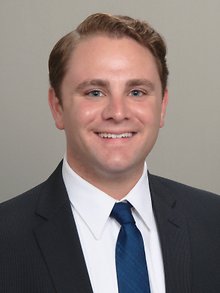By Andrew Lieber, Associate, Brailsford & Dunlavey. Full bio below.
The term “public-private partnership” (“P3”) is being thrown around so often in collegiate athletics facility development these days, it might as well be the basketball in a run-and-gun offense. In fact, every athletics department has taken notice of Oak View Group’s deal to deliver a new $300M arena for the University of Texas under a P3 agreement—and is now asking the question, “Why not us, too?”
That deal, however, is more complex than it appears, with a significant amount of funding coming from UT Athletics fundraising. The common misconception is that P3 means a University gets a “free” building. In the UT case, that is clearly not the outcome — even if the outcome is, with all factors considered, the right solution for UT. In fact, each institution’s financial and market capacities, and strategic goals, are unique, meaning the type of P3 that may be appropriate is unique to each institution is unique as well. There are other types of P3 agreements that can be utilized to incrementally improve the fan experience and financial performance at your arena.
In its simplest form, a P3 is the transfer of risk and reward between two partners—a public (or not-for-profit) entity and a private entity. Various P3 structures can be in play for a particular deal; there are transfers of ownership (development agreement), transfers of risk (concessionaire agreement), and expense management (management agreement).
But there
This is the exact question the University of Pittsburgh asked itself when its long-term agreement with SMG (now ASM Global) to operate the Petersen Events Center (“PEC”) approached the end of its term, requiring Pitt to exercise annual options under the current structure, renegotiate a new deal, or competitively bid the contract. The questions before Pitt were: “Are we getting the most out of our agreement with our operator? Are we even getting a market-rate deal?”
Brailsford & Dunlavey, serving as Pitt’s advisor in this process, recommended taking a step back and first assessing whether the PEC was achieving what it needed to, beyond revenue. This meant an honest assessment of the PEC’s strategic value in contributing to the achievement of mission-centric objectives for the University and the Athletics Department, such as enhancing the campus and community experience, achieving a competitive and comprehensive university profile, and improving financial performance through donor cultivation.
Next, B&D thoroughly analyzed the existing arena operations compared to the market potential to determine the gap between current and optimal performance. Perhaps surprisingly, this meant previous efforts, such as hosting more and more outside (non-university athletics) events to bring in community members, turned out to be not just impossible (because the arena was already hosting nearly as many events as the schedule would allow) but ultimately not the most strategically valuable direction. The greatest opportunity for improvement was enhancing the Pitt Athletics experience. This would help Pitt achieve its goals as an institution while also achieving revenue goals.
It is at this point where many universities would elect to self-operate, because venue operators are most widely known as the means to maximize outside events and related revenues. However, operators are also experts in maximizing operational efficiencies and delivering a premier customer experience. Plus, Pitt and ASM Global, the existing operator for the PEC, had built a successful long-standing relationship over the years. And given that P3s are simply a transfer of risk for mutual benefit, B&D reasoned Pitt might be able to position ASM Global to take on risk related to the Pitt Athletics experience.
B&D and Pitt 
- Pitt receives the largest-ever capital contribution from a private venue manager in a hybrid concessionaire agreement, while maintaining operator fees consistent with market rates and the previous agreement.
- ASM Global receives performance bonuses that are achievable and aligned with the greatest opportunities for strategic and financial improvement.
- The overall experience at the PEC improves as ASM Global achieves performance goals benefiting the University.
For readers scratching their heads at what the catch is, there isn’t one. What Pitt and B&D have pioneered is a way to attract private capital without having to pay it back other than through regular operations. But by paying it back that way, the school does not provide any upfront capital while receiving an improved facility. In Pitt’s case, the improvements result in an annual financial gain that is significantly larger than the annual cost of the contract. Meanwhile the operator’s fees and incentive bonuses cover the cost of their capital and operations, so they’re not losing money. It is a true win-win: the venue manager makes more, and the University makes and gets more.
At the end of the day, collegiate athletic departments are trying to provide the best experience possible for their student-athletes, fans, and the campus community. This type of agreement is another tool in the toolbox to do just that. “Without question venue management, guest experiences, and fan expectations are under heightened scrutiny,” said Christian Spears, Deputy Athletic Director and COO for Pitt Athletics. “Now more than ever you need genuine partnerships with shared outcomes. There is no question that happened here and B&D helped make that happen for us.” While not as glamorous and headline-grabbing as the Oak View Group / University of Texas P3 arrangement, this one between the University of Pittsburgh and ASM Global is trailblazing in its own way—and is likely a model that’s also more realistic to consider and implement for many athletic departments in the Power Five conferences and beyond.
ANDREW LIEBER is a strategic advisor on collegiate, professional, 
